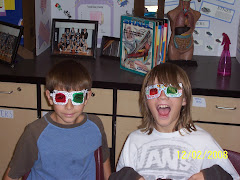By: Gem Confer
Corn snakes, also known as red rat snakes, are a large, powerful, and non-venomous constrictor in the genus Elaphe. Corn snakes feed on rodents and other small prey. In fact corn snakes got their name both from the pattern on their belly, which looks like Indian corn, and from old southern farmers who stored their harvested corn in wooden buildings called cribs. The average adult corn snake will grow to be about 3 to 5 ft. long in a period of about four years. However they are always growing. The longest corn snake on record was 6 ft. long. Corn snakes are very shy, and usually most active at night, however this varies with temperature. During the day they often hide under loose tree bark, beneath logs, rocks, and in rodent burrows where they search for their prey. Corn snakes swallow their food whole, usually beginning with the head. Their list of prey items include most any small lizard, rodent, or bird and their eggs, that are the same diameter, or close to the same diameter as the snake's body. Adult corn snake will predominantly feed on rodents; however, on occasion, they will take a bird or a bird's egg. . One end of the enclosure should be warm (80 to 85°F [26.7 to 29°C]), and the other end at close to room temperature. You may feed a corn snake twice a week, depending on the prey's size, but once a week is usually enough. Most reptiles and amphibians found in the pet trade can be easily converted to feeding on killed prey. Signs of a bacterial infection or endoparasites are listlessness, failure to eat over several weeks, or regurgitation of meals. Left untreated, infestations can not only kill your snake, but can even be transmitted to humans. Collect the feces or vomit in a clean plastic bag, and seal it. Label it with your name, phone number, date, and your snake's name. It is best to have these tests done by an experienced reptile vet.

Part 2
The Adventure Continues
Baby Corn Snakes can be kept for quite some time in a 10 gallon fish tank. One adult should have a 30 gallon tank or larger. Bigger is always better! Obviously multiple adults need a far larger cage. They need a heating pad at one end of the tank so they can move back and forth adjusting their body temperature. There are under tank heaters that can be purchased at most pet stores. The tank must have a locking screen top. This is very important. Most pet stores sell clips that lock the top down securely. Buying 4 clips will ensure that you won't be doing any "snake hunting" around the house. People will tell you to just stack books on top, but beware, snakes are escape artists that can wriggle through a very small hole. Corn Snakes need a bowl of fresh water at all times, preferably large enough for them to submerge their whole body in. They like to soak themselves quite frequently. They do not need any special lighting like most lizards do. They need to be fed once per week as babies (frozen, thawed mice are best) but as they get larger they can be fed every 2 or 3 weeks. Obesity can be a problem since they don't get the exercise that their wild counterparts get. Yes, they only eat mice and or small rats. There is no substitute. So, if you are squeamish about that, maybe a snake isn't for you! Speaking of exercise, letting your snake out for some exercise on a regular basis is a very good idea. When they are small they can just come out and wind around your fingers and arms. When they get bigger they can cruise all over your body or they can be let go on the floor under close supervision. Baby Corn Snakes tame down VERY quickly. All it takes is some daily handling for about a week and they become very "friendly". An adult that hasn't been handled much will tame down also although maybe not so fast. Babies may nip at you at first but that should end quickly. It doesn't hurt much anyway. When picking up a Corn Snake you want to be gentle but firm. A small snake or a baby can be picked up with one hand. A larger one needs to be supported with both hands. Don't just pick up an adult by either end while letting the other end dangle. If the snake feels unsupported it might thrash around and injure itself. Let a baby Corn Snake slither through your fingers, back and forth between your hands. Just keep letting him crawl around. He may be fast at first but once he figures out that you don't want to hurt him or eat him he will calm down. Corn Snakes don't calm down as much as the Pythons or Boas. It is just their nature to be more active. Don't expect to be able to walk around the house with your adult Corn Snake wrapped around your neck. It is more likely that he will be crawling all over the place and attempting to wrap around anything you walk near.





















